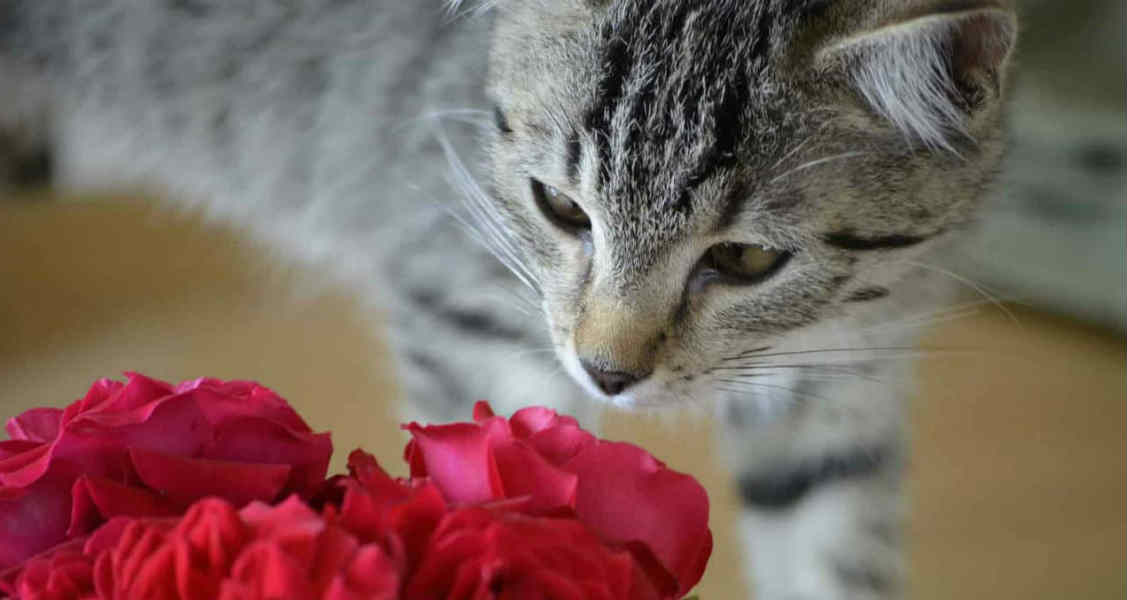Valentine’s Day Safety Tips for Pets
By: Abby Marshall | Reviewed by Dr. Clayton Greenway, B.Sc., DVM | Feb 4, 2019

What comes to mind when you think of Valentine’s Day? Candy, flowers, wine, gifts, candlelit dinners? All of these things can add to the enjoyment of the holiday, but did you know that they also pose a danger to your furry friends? Take a moment to consider these Valentine’s day safety tips for pets so you don’t end up spending your romantic evening at the pet emergency clinic.
Candy
Most people know that chocolate poses a danger to pets, especially dogs, but it’s not just those Hershey’s Kisses that can cause a problem. Baking chocolate is also toxic, so be careful when cooking and keep the chocolate cake, torte, and soufflé well out of reach.
Are you and your sweetie still sticking to your New Year’s resolutions? If so, congratulations! You’re doing better than most. However, should you choose to give sugar-free candy or other sugar-free treats to your significant other, note that these items should be kept away from pets as well. Sugar-free foods are often sweetened with xylitol, which is toxic to dogs. Ingestion lowers the pet’s blood sugar, which can result in seizures, liver failure, and even death.
Candles
We all look better in candlelight, right? However, opting for battery-powered candles for your romantic dinner is a safer bet. Curious pets may get too close to flames and get burned, or a swishing tail may knock over a lit candle, starting a fire. If you do use the real thing, follow the old adage of “never leave a burning candle unattended.” Blow out those flames any time you leave the room.
Alcohol
Sitting on the floor in front of the fire with a glass of wine—it doesn’t get more romantic than that. But don’t stare lovingly into your partner’s eyes for so long that you forget your pet. While cats are more discerning and probably unlikely to partake, alcohol is appealing to some dogs, and an unattended glass may be empty before you know it. Canine kidneys aren’t meant to process alcohol, and since dogs (for the most part) are much smaller than humans, even a small amount can cause problems.
Flowers
A floral bouquet is a great way to show someone you care, but if buying flowers for a cat owner, ensure there are no lilies included. These blooms are highly toxic to cats, but they aren’t the only plant that can produce systemic effects or gastrointestinal distress in your pet. Take a look through this list common houseplants that are poisonous to cats and dogs, and remove anything in your bouquet that might create an issue.
Also, watch those thorns! If a pet bites or steps on one, it can cause an injury. De-thorn roses and other prickly flower stems before placing them anywhere a pet might reach.
Gifts
One of the best things about Valentine’s Day is the gifts! But ribbons, tape, and gift bags all pose threats to your pets. Cats especially can’t resist ribbon and string, but if ingested, these can cause an intestinal obstruction, and if they’re played with, they can wrap around a pet’s leg or neck, cutting off blood flow or resulting in strangulation. Tape and other adhesives can be toxic if eaten, and watch out for those gift bag handles—cats love to play in bags of any type and may get caught in the handles. Keep gifts out of reach of pets, and as soon as any presents are opened, discard the wrapping.
A pet emergency clinic is one of the most unromantic places there is. Don’t spend your Valentine’s Day in its waiting room. Instead, plan ahead and use these tips to keep your pets safe from the holiday’s hazards.


Disclaimer: healthcareforpets.com and its team of veterinarians and clinicians do not endorse any products, services, or recommended advice. All advice presented by our veterinarians, clinicians, tools, resources, etc is not meant to replace a regular physical exam and consultation with your primary veterinarian or other clinicians. We always encourage you to seek medical advice from your regular veterinarian.

